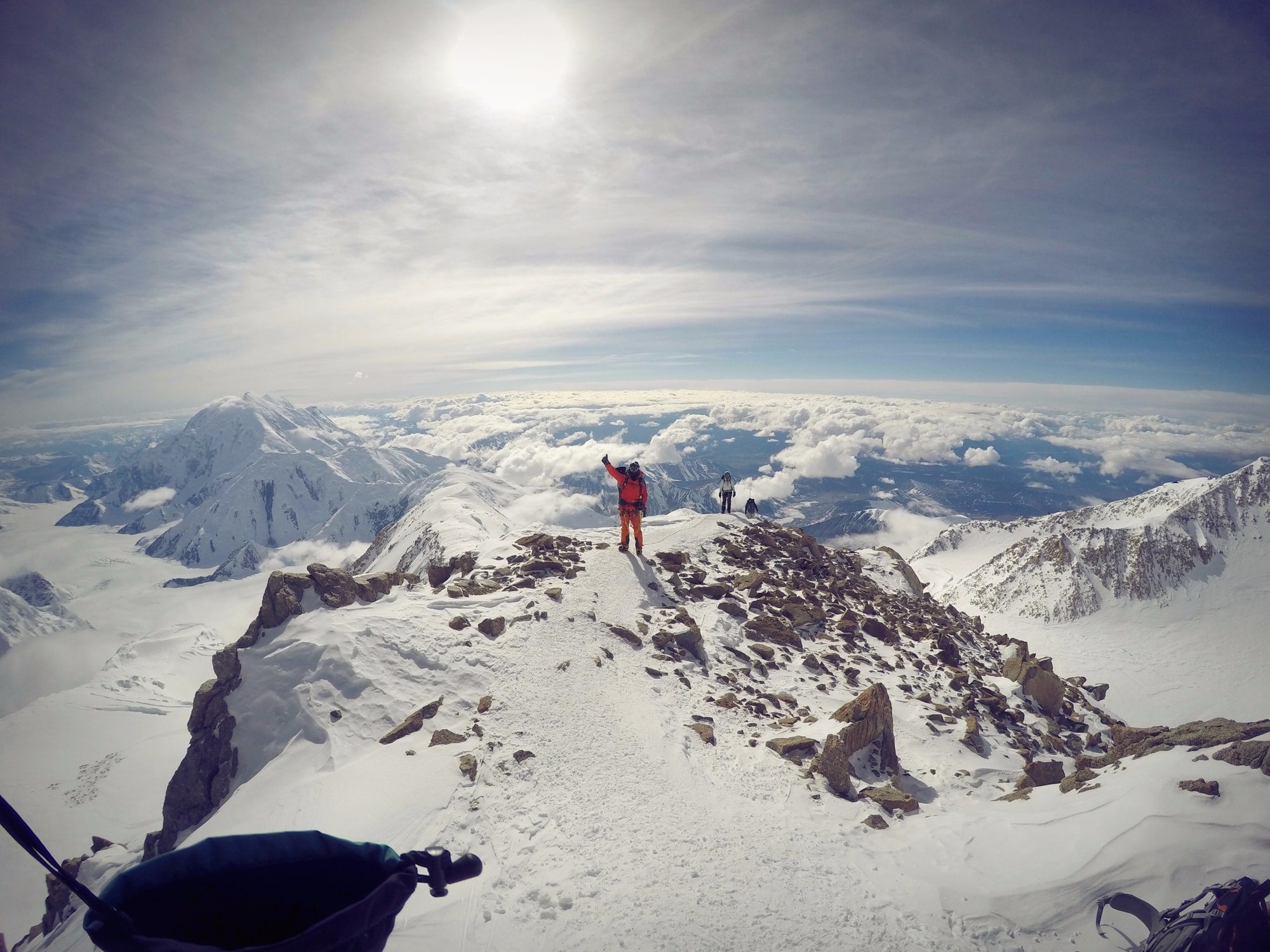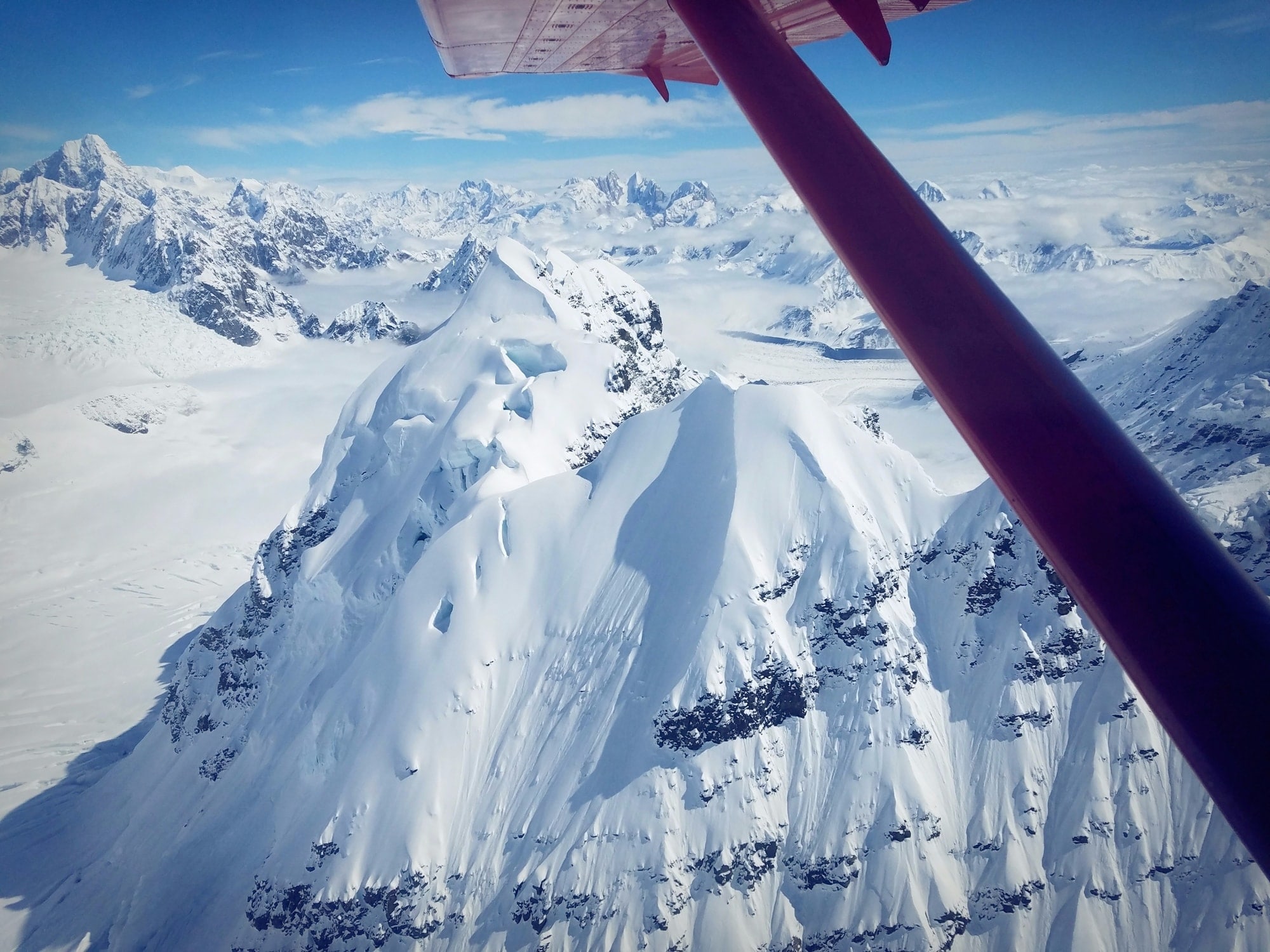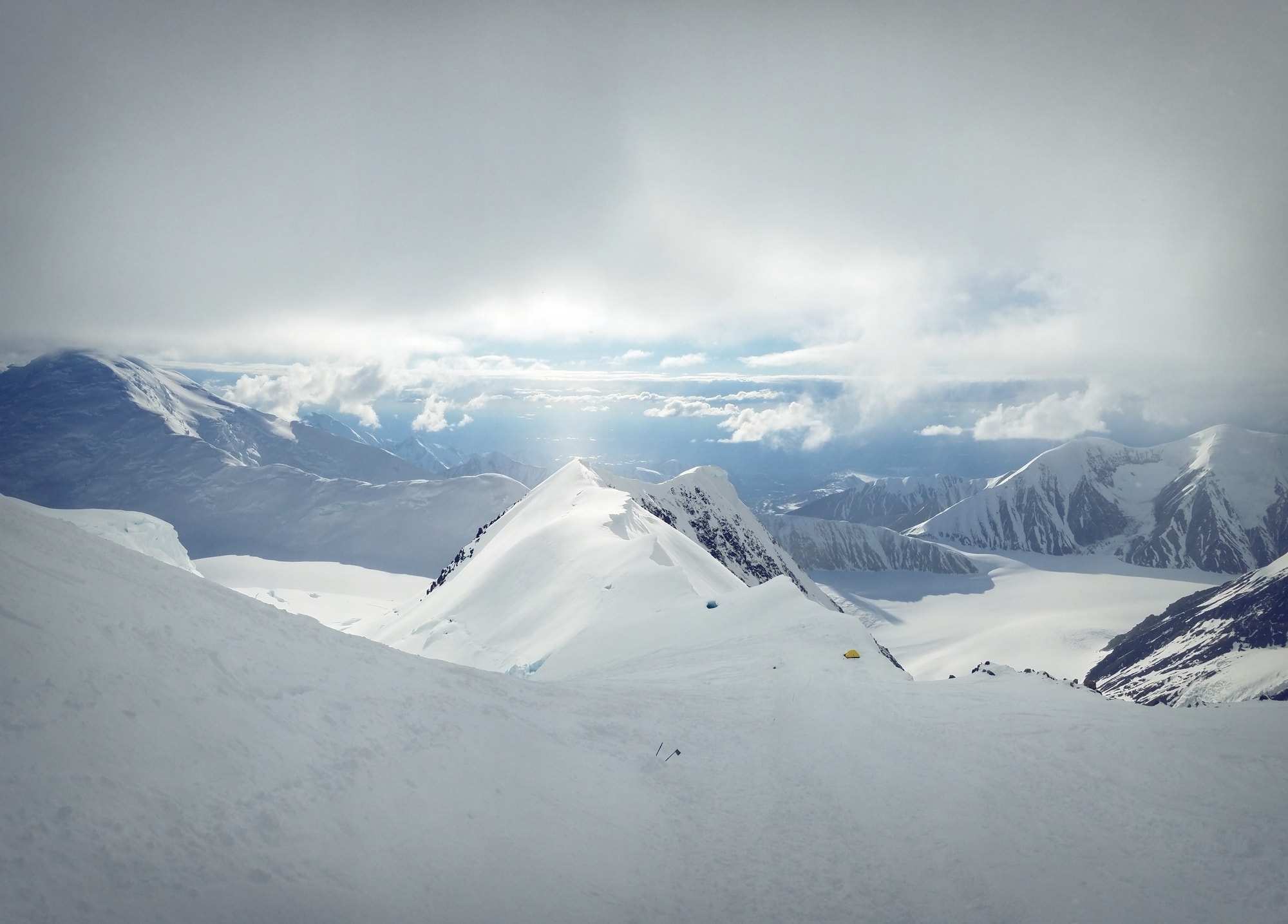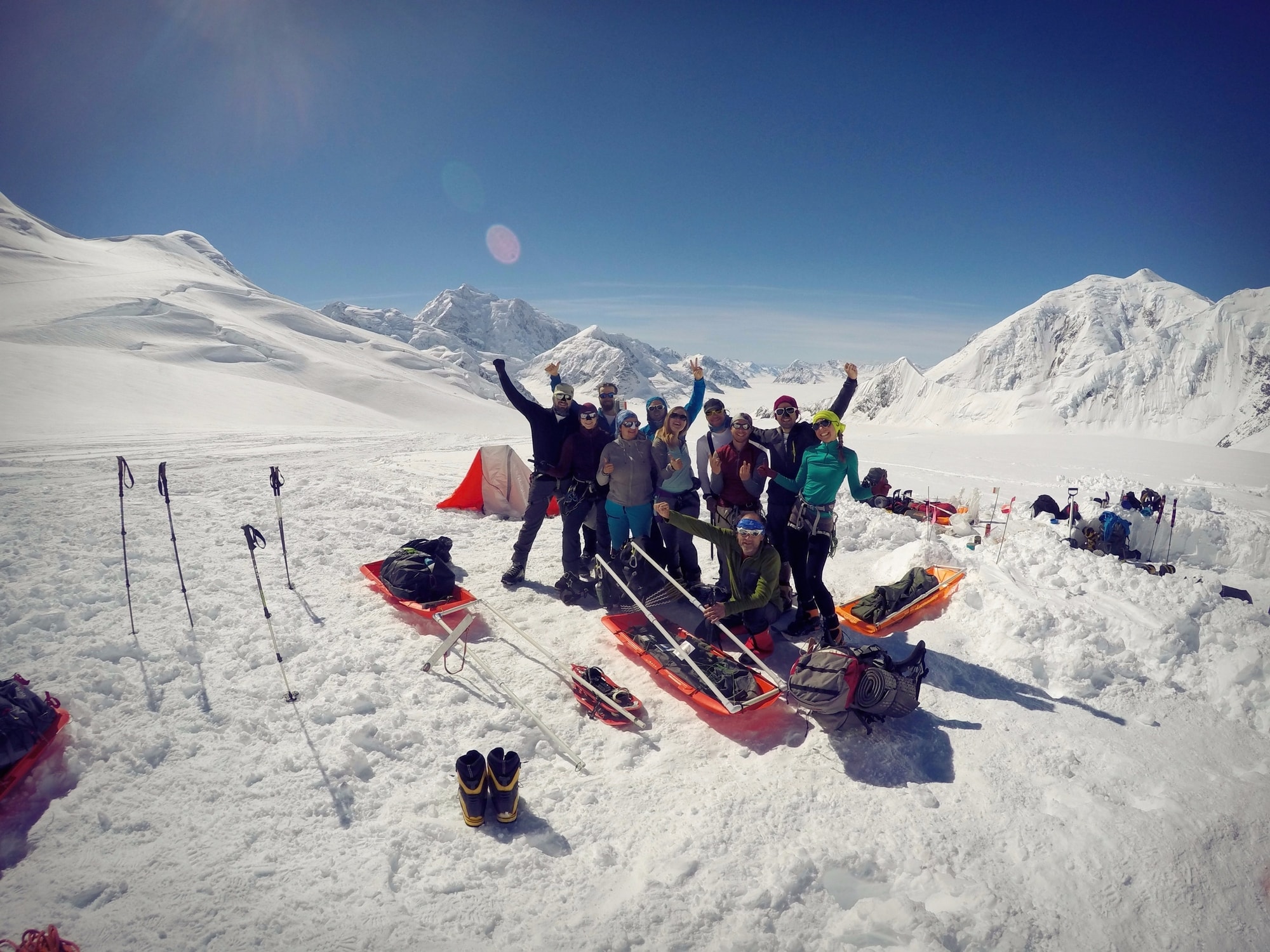
What to bring to a Denali expedition?
Bring humility. Bring lots of it. Every drop you have gathered in your lifetime will be beneficial on Denali.
Being the overconfident, sometimes arrogant, and mainly very lucky person I am, I signed up for a Denali expedition with a group of acquaintances. I also signed my husband up without asking him, which is why he loves me.
Immediately, preparations began. We had six months to get ready. Although I personally knew nine of the eleven members of the expedition, I have never done any serious mountaineering with them. Everyone was located in Seattle, while my husband and I were in New York, so planning had to be done via Skype. After the first few video chats, it became painfully clear that a lot of questions and objections lay ahead.
Our leader’s decisions were being met with meticulous scrutiny. While this is good for the sake of learning and understanding in the comfort of someone’s living room, it can be disastrous at high altitude. What struck me the most is the nature of these questions. They were not about the proper use of equipment or emergency procedures, but rather how the food rationing was inadequate, and how we needed more solar panels and tents.
I tried repeatedly, but carefully, to reiterate that although we are all very excited, we need to follow instructions from the most experienced and knowledgeable person without hesitation. After all, he has summited Denali several times. I was very satisfied with my diplomatic method of communication, and at that hopeful moment boldly overestimated my patience.
I am not the easiest person to get along with, but please remember that it is difficult to live in close quarters with anyone. Even Mother Theresa would drive you crazy after a week at 14,000′, so the best thing to do to prepare for an extended period of cohabitation in extreme conditions is to devise a plan that will let you avoid critical situations before they get unbearable.

Tips for an expedition in the mountains
1. Make sure everyone knows they are responsible for their own weight
This seems like an extra obvious one, but it is unbelievable how hard people will try to pawn off their share of group gear because their packs are already too heavy with their personal belongings. Tell your group repeatedly that everyone is responsible for their own gear plus a fair share of group weight.
We assembled into two four-person and one three-person rope teams. Our team consisted of two girls and two guys. Group gear and food weighed about 60lbs. Girls carried about 12lbs each and guys had about 17lbs each. If someone decides to bring an extra 10lbs of chocolate, make sure they are well aware that they, and they alone, will be hauling it.
2. Always bring earplugs
Good ones. Nothing is worse than being sleep deprived at high altitude because someone is snoring all night. It’s difficult enough to sleep while acclimatizing, so you will be very tempted to smother whoever is robbing you of sleep.
3. Bring some audio and headphones
This will help distract you when someone starts driving you nuts. There isn’t anywhere you can really go (don’t wander off and risk falling into a crevasse, even at camp) so when there are no rad camp neighbors to chat with, or you just need alone time, sit back and float into an alternate reality even if you’re sitting right next to the source of your agitation!
4. STFU
This is the most important one. At high altitude, you will start going a little crazy. There is just no way around it. Most people experience some sort of altitude sickness after 11,000’ and I have not seen a single person stay completely cool.
Little things will start eating away at your brain, and stupid questions will literally hurt you. This is the most important time to be quiet. You will find out people don’t know how to coil a rope, or tie a prusik, or use an ascender, or properly bury a picket. We had one member suggest using an ascender to lower on fixed ropes, and another try to bury a picket horizontally deadman style. And all this will happen on the ridge at 17,000’.
Although your entire body will tell you to cut the rope and shove that person off the cliff, you need to STFU, help them, get to camp, and then teach them to do these things. Yes, you might think “what kind of silly person comes to climb Denali before learning these basic things?” and “if I fall into a crevasse I will certainly die while this guy stands picking his nose” but this is not productive. You should have thought to check elementary preparedness earlier. Now your best bet is to calmly find out what else they don’t know before trusting them with your life.

Takeaways and final thoughts
It may seem like a unique situation, but don’t be fooled. This happens very often. Most times in a mixed-level group the more experienced climbers do all the necessary work so the existing ignorance remains undiscovered. This is super common in rock climbing as it becomes increasingly popular. People get very confident pulling plastic, but have no experience building anchors, avoiding rope drag, cleaning routes, etc.
The most dangerous part is that often they are unaware of what they don’t know until faced with the situation on the wall. I have come across this a few times, and I am still looking for a way around it. Bluntly asking if people know how to perform certain tasks is commonly ineffective as they overestimate their experience. Having tied a prusik once under the supervision of a gym instructor does not qualify. Having seen a diagram of a crevasse rescue does not mean your partners are safe.
This recount is a bit pessimistic, but regardless of how it may seem, I actually have very fond memories of the expedition. I am grateful that we all came back safely and I am able to sit here and reflect. The altitude spell has been lifted, all relationships have been salvaged, and friendships have become stronger. New trips are being planned and bags are being packed. All is well when everyone comes back alive.

Explore More
Related articles you'll loveOur 40+ most popular articles ever
Today’s Best Rock Climbing Gear Deals
200+ rock climbing videos
Story: Learning the Language of the Mountains
“I Will Climb, Too” — A Story on Mentorship and Responsible Climbing
Notes from a First-Time Ice Climber
What’s In Your Pack: Peter Croft on Gear and Alpine Efficiency
Essay: Words from Conservationist and North Face Founder, Doug Tompkins
World’s Fastest Woman: Masha Gordon on the Seven Summits, Business, Motherhood
In Search of New Mountains (From Yosemite to Denali)
To Keep Moving Forward: How Doing Hard Things Can Help Us Heal
Get daily updates by Liking us on Facebook
Free rock climbing PDFs on technique, training, knots, and more







